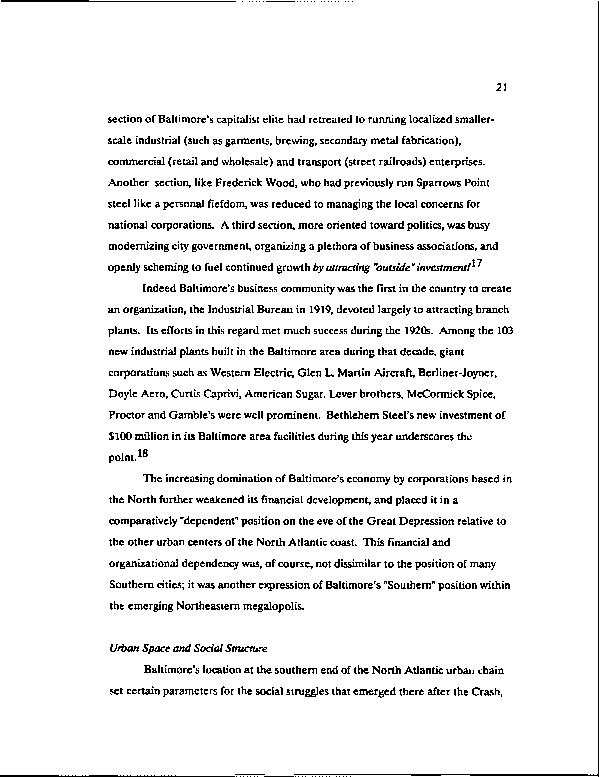|
21
section of Baltimore's capitalist elite had retreated to running localized smaller-
scale industrial (such as garments, brewing, secondary metal fabrication),
commercial (retail and wholesale) and transport (street railroads) enterprises.
Another section, like Frederick Wood, who had previously run Sparrows Point
steel like a personal fiefdom, was reduced to managing the local concerns for
national corporations. A third section, more oriented toward politics, was busy
modernizing city government, organizing a plethora of business associations, and
17
openly scheming to fuel continued growth by attracting "outside" investment !v'
Indeed Baltimore's business community was the first in the country to create
an organization, the Industrial Bureau in 1919, devoted largely to attracting branch
plants. Its efforts in this regard met much success during the 1920s. Among the 103
new industrial plants built in the Baltimore area during that decade, giant
corporations such as Western Electric, Glen L. Martin Aircraft, Berliner-Joyner,
Doyle Aero, Curtis Caprivi, American Sugar. Lever brothers, McCormick Spice,
Proctor and Gamble's were well prominent. Bethlehem Steel's new investment of
$100 million in its Baltimore area facilities during this year underscores the
point.18
The increasing domination of Baltimore's economy by corporations based in
the North further weakened its financial development, and placed it in a
comparatively "dependent" position on the eve of the Great Depression relative to
the other urban centers of the North Atlantic coast. This financial and
organizational dependency was, of course, not dissimilar to the position of many
Southern cities; it was another expression of Baltimore's "Southern" position within
the emerging Northeastern megalopolis.
Urban Space and Social Structure
Baltimore's location at the southern end of the North Atlantic urban chain
set certain parameters for the social struggles that emerged there after the Crash,
|

